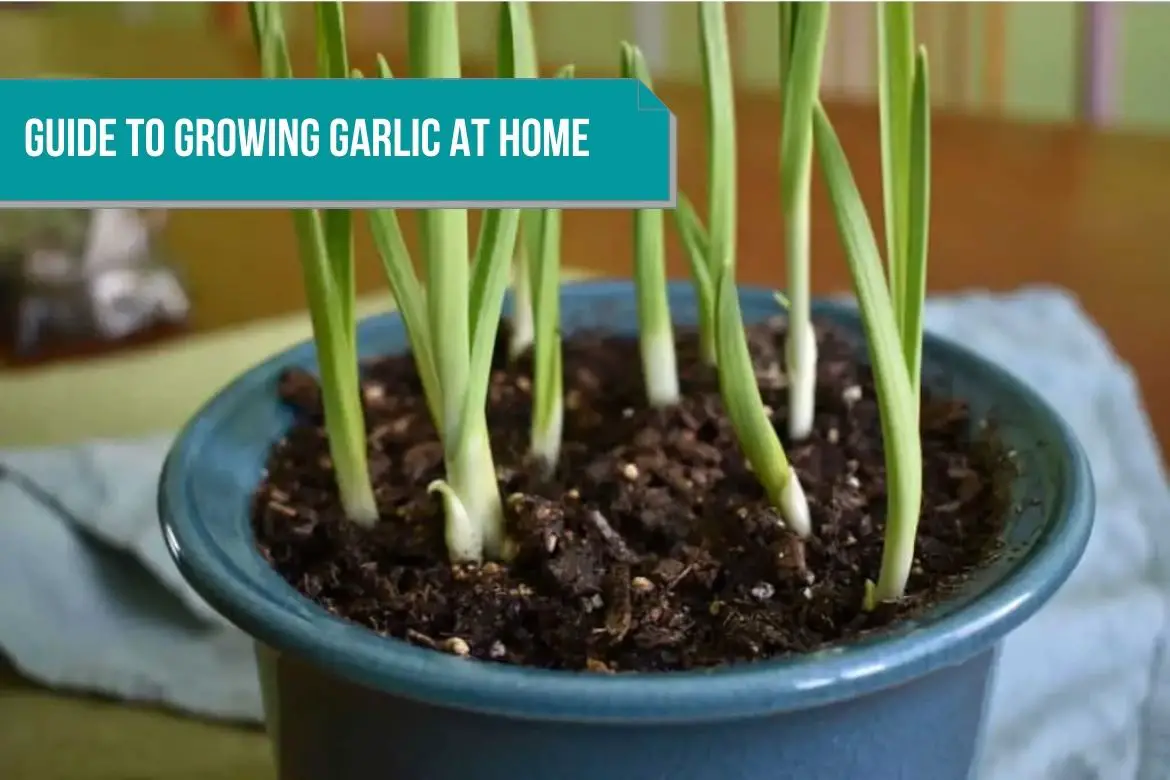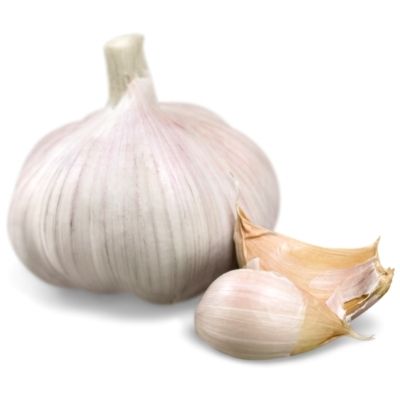
Botanical name : Allium sativum
Flavor Profile : Spicy and pungent mild sulfur
Garlic is a small underground perennial bulb herb, native to Central Asia, Siberia, and the western Himalayan regions.
Garlic is commonly known as ‘stinking rose‘ due to its strong odoriferous characteristics. Garlic is one of the oldest of all cultivated plants.
The whole garlic bulb is referred to as either a ‘head‘ or a ‘knob‘. And the individual parts are referred to as garlic cloves.
It is used primarily to flavor and season vegetables and meat dishes. Bulb is generally eaten raw or cooked depending on the recipe.
Garlic flower stems known as ‘scapes‘ can also be eaten and used in cooking. The stems can be used much like chives, but are milder in flavor.
Along with being used as a flavoring codement, garlic is also commonly used in modern folkloric medicine.
There are 2 main varieties of garlic: Hardneck and Softneck.
Varieties of Garlic
Hardneck – Generally produce a woody flower stock – scapes. They do best in regions with long winters and short seasons of vegetative growth.
- Rocamboles
- Porcelain
- Purple Stripe
Softneck – These type of garlics don’t produce scapes. These types are more suited to areas with long seasons and mild winters.
- Artichoke
- Silverskin
List of garlic Varieties
- Bogatyr
- Brown Tempest
- Calabrian Red
- Chesnok Red
- French Pink
- Georgian Fire
- German Red
- German White
- Krasnador Red
- Marino
- Metechi
- Music
- Pennsylvania Dutch
- Pitarelli
- Red Rezen
- Riesig
- Russian Red
- Spanish Roja
- Stull
- Unadilla, Unadilla Coil, Unadilla Double Coil
FUN FACT : The elephant garlic (Allium ampeloprasum) is not a true garlic. Instead, it is a type of leek. A bulb containing 5-6 cloves can weigh up to a pound. While the flavor is milder than true garlic, in cold climates it can take on a bitter or sharp quality.
Health benefits of Garlic
According to a US Food and Drug Administration survey of 900 people, garlic is the second most commonly used supplement.
For medicinal purposes, garlic preparations are given for whooping cough and other lung diseases, stomach problems (such as ulcers of the intestines), disorders associated with childbirth, and as a specific remedy for sore eyes and earaches.
It is antibiotic in nature. In fact, it is reported to be more effective than penicillin against certain microorganisms.
It also balances blood pressure and improves circulation.
Lowers cholesterol while increasing HDL (high-density lipoproteins) levels
Garlic oil is also used in Ointments or Poultices to cure arthritis, insect bites, toothache, wounds, and inflammations.
Aside from its high protein content, garlic is also rich in calcium, magnesium, iron, potassium, zinc, arginine, saponins, polyphenols, and selenium. In addition, it is a rich source of vitamin A, vitamin B6 and B1, and vitamin C.
Please refer nutrition facts of garlic for more details
How to grow Garlic indoors
Garlic cloves divide and produce more bulbs if you grow your own, so you may never need to buy garlic again. Growing and storing garlic require little space, and it is easy to grow it in a pot.
During mid-autumn, after the first frost, is the appropriate time to plant garlic, which grows perennially.
If you live in a cold climate, plant garlic about six weeks prior to ground freezing. You may harvest it the following summer.
If you live in a hot climate, plant garlic late winter or early spring.

If you plan to plant garlic, don’t buy it from the supermarket since they often sell varieties that aren’t local. Instead, go to a local nursery.
Garlic from a grocery store should never be substituted for garlic from a garden center or specialty supplier. Because they are produced under controlled conditions, there is less chance of plant viruses spreading, and they are not treated so that they won’t sprout.
Plant size
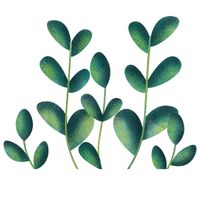
1 – 4 feet ( 12 – 48 inches OR 30 – 120 cm )
Container / pot Size

8 -12 inches wide and 8 inches deep at least. (20 – 30 cm wide approx) wide and Deep at least.
Refer how to choose the right container for your indoor plants for more details.
Sunlight

Full Sun.
You should give your garlic plants at least six hours of direct sunlight every day in order to produce full heads of garlic.
For best results in growing garlic indoors, place the container near a large south facing window. Or you can place the container near east or west facing windows or windowsills. Placing under a skylight under direct sun is also a good option.
Refer Best locations and Light requirements for indoor plants for more details.
Soil

Well drained, loose and rich in organic matter potting mix.
If you are stuck with garden soil, make sure that the soil is sandy loam or loam soil as garlic does well in these types of soil. However, garlic is high nutrient demanding crop. So stay away from garden soil as much as you can if you don’t wish to use fertilizers.
Garlic cannot grow in soils that are highly alkaline or saline.
Refer types of soils for gardening for more details.
Garlic thrive on a soil with pH range 6 to 7.
You can mix compost in the potting mix in the ration of 50:50.
Please refer How to get the right potting mix for your container plant for more details.
Sowing
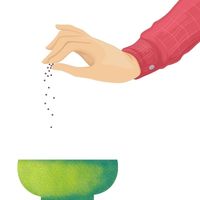
As mentioned earlier, for the purpose of growing garlic in a pot, get the cloves from a nursery or a good seeds distributor.
Separate the cloves from the bulb and remove the papery skin. Make sure the cloves are planted upright, with their flat bases pointing down. Push them down (1-2 inches deep) just enough to cover the tops.
However, in places with severe winter, you can sow the garlic clove 2-4 inches deep in the soil.
An alternate way of sowing garlic in a pot can be, without removing the skin of the cloves, place them in a glass or a small container with flat base pointing down. Put a little bit of water in the container. Make sure not to submerge them completely in water. In few days or about a week, you will get a 4-5 inch garlic seedling.
Keep a distance of 6 inches between the cloves in case you plan to grow multiple garlic plants in a big pot.
Keep the soil moist at the time of sowing the garlic cloves. Keep the pot in full sun.
In about 5 days you will see 1 inch seedlings sprouting. In about 12 days the seedlings will become almost 4 inches in length. In 20 days the plants will become 6-8 inches in size. In 40 days the you will see a strong 10-12 inch garlic plant.
Watering
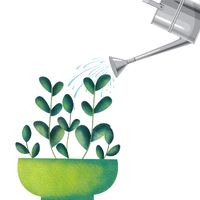
Garlic plant in pot can be watered once a week or when ever you see the potting soil cracking.
One you see the tops of garlic coming out stop watering for a while and let the potting soil dry out a little.
Watering the garlic as it matures causes the roots and bulb scales to rot. That results in discolored bulbs and exposed outer parts.
Following a long dry spell, watering will result in splitting of bulbs. Overwatering will result in the sprouting of cloves.
After planting, water garlic thoroughly, and again after removing the mulch in spring. Following that, water the plant every couple of days or whenever the soil feels dry.
It goes without saying that the container should have drainage holes just in case excess water is used while watering garlic.
Refer How to make drainage holes on potting container for more details.
Harvesting

Garlic takes 90 -120 days to completely mature.
However, you can harvest the garlic stems – scapes, in about 30-40 days.
Harvesting the scapes will also encourage the plant to focus on growing the bulb.
When you see yellowing of the scapes and the scapes start to droop, you can harvest the garlic bulb but removing the surrounding soil from the base and gently lifting (and not pulling) the plant up.
Plant care
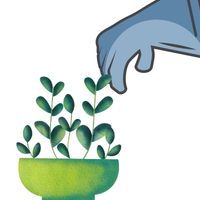
Garlic requires little maintenance once planted, but it does not like to be crowded by other plants.
In dry weather, keep the potting mix moist.
The birds love pulling out the cloves from the garden or the container. Hence, if you plant to keep the garlic pot outside on the windowsill or balcony, cover the pot with a net or a mesh until the seedlings come out.
Seed yields and the quality of the produce are enhanced when the weather is dry and moderately cool during the seed formation stages.
Protect the garlic during the winter by covering it with a thick layer of mulch. Colder regions require more mulch, while hotter regions require less. Once the last frost has passed, remove the mulch and thoroughly water the pot.
Remove any flowers to encourage bulb growth.
Regularly weed the pot.
SUBSTITUTES FOR GARLIC IN THE KITCHEN
- Onions
- Leeks
- Chives
How to keep Garlic fresh
Peeled cloves can be kept fresh in refrigerator in a zip lock bag or container for about 10 days. Whole bulbs can be stored in cool dry place for about 2 months.
If you wish to increase the shelf life of cloves even more, you can hang dry them. This process is called “curing”.
For curing, hang the garlic in a dry, well ventilated and cool place. Avoid exposure to rain and direct sun. Kitchen might not be the best option as it is relatively humid then rest of the house.
Whole cloves or chopped cloves can also be freeze stored. However, the flavor and the texture of cloves will change a little.
Garlic flakes can be made by baking minced garlic. Heat the minced garlic for about 48 hours at a temperature of 115 degree Fahrenheit (46 degree Celsius). Garlic flakes can be stored in a container for few months. You can even store garlic flakes in freezer for up to an year. Grind the garlic flakes in case you need garlic powder.
Please refer to how to store herbs and spices for more details.
How to use Garlic in the kitchen
The various cuisines of Asian, French, and Italian cooking use garlic as a spice and as a condiment.
Almost any savory dish tastes delicious with garlic. Fresh garlic has a spicy taste and pungent aroma. Minced finely, it is served on salads, soups, dressings, salsas, guacamole, and sauces such as pesto and aioli.
During cooking, the flavor becomes more smooth and mild. Garlic can be roasted alongside beef, pork, lamb or chicken; chopped or minced garlic can be added to stir-fries, curries, pasta sauces, cooked vegetables, and rice.
In some long cooking time recipes, the whole unpeeled garlic bulb is put in the pot. After 2-3 hours of cooking, the cloves can be peeled and consumed. The cloves become flavor induced, smooth and silky.
Dishes that go well with garlic: The scapes of garlic can be used in any recipe as an alternative to onions, shallots, scallions, or leeks.
Garlic is used in soups, curries, meat roasts, salads, rice, stir-fries, pizza, sauces, marinades, dressing, pasta, chutney, pickles.
Garlic powder is used as a seasoning on sauces, curries, chutney, pickles, roasted vegetables.
Preparation of garlic for food: Garlic cloves are used as a whole or chopped or as a paste. Garlic scapes are chipped like chives before adding it as a topping.
garlic is also used as a paste or in dried form in many types of recipes.
Pairing Garlic with food
Seasonings that go well with garlic :
Lemon juice, basil, Worcestershire sauce, parsley, oregano, chives, cumin, red pepper flakes, ginger, basil, cloves, bay leaf, cayenne, honey, soy sauce, rosemary, thyme.
Fruits and Vegetables that go well with garlic:
Potatoes ( White Potato, Red Potato, Russet Potato, Purple Potato ), tomatoes, onions, carrots, beets, zucchini, asparagus, celery, asparagus, peppers ( Green pepper, red pepper, yellow pepper ), Mushrooms (Enoki Mushroom, Morel Mushroom, White Mushroom / Button mushroom, Cremini Mushroom, Portabella Mushroom, Shiitake Mushroom, Maitake Mushroom, Chanterelle Mushrooms, Oyster Mushroom) eggplant, avocado, peas, celery.
Proteins that go well with garlic:
Fish and seafood, Eggs, goat, lamb, lentils, pork, cheeses, beans, duck, chicken, sausages.

